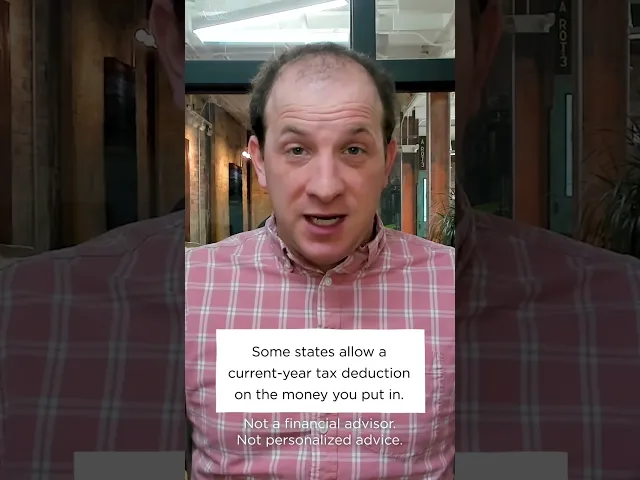How to Start Saving for Your Kids’ College
A survey finds that 20% of parents of minor children haven’t started saving for their kids' college, but want to.

Many, or all, of the products featured on this page are from our advertising partners who compensate us when you take certain actions on our website or click to take an action on their website. However, this does not influence our evaluations. Our opinions are our own. Here is a list of our partners and here's how we make money.
The investing information provided on this page is for educational purposes only. NerdWallet, Inc. does not offer advisory or brokerage services, nor does it recommend or advise investors to buy or sell particular stocks, securities or other investments.
Raising kids is expensive: On average, the expenses of one child from birth to age 17 add up to over $300,000, according to the latest data from The Brookings Institution. And that doesn’t even account for the massive expense of postsecondary education.
A new NerdWallet survey found that 1 in 5 parents of children under 18 (20%) haven’t started saving for their children’s college education, but want to. Here’s how to begin.
Consider opening a tax-advantaged account
When choosing an account for college savings, look into tax-advantaged options. One such option is a 529 account, which is specifically designed to save for education expenses. A 529 plan allows your savings to grow tax-free, and some states even offer a tax deduction on your contributions.
The downside of a 529 account is that if you withdraw the earnings for anything other than qualified education expenses, you will be penalized. You can change a 529 beneficiary to another member of the family, so if your child decides not to go to college, you can pay for qualified education expenses for another child or even yourself, but there’s the risk that you won’t need the funds for education at all. There are also limited investment options with a 529.
Another savings option is a Roth IRA, which is traditionally used as a retirement account, with earnings that grow tax-free. Contributions to a Roth IRA are limited to$7,000 in 2024 and 2025 ($8,000 if age 50 and older) . There are also income restrictions, and contributions can’t exceed earned income. So, unless your child earns money, you’ll likely have to use your own Roth IRA to save for your kid’s college.
Contributions to a Roth IRA can be withdrawn at any time, but earnings are usually subject to a penalty if you withdraw them before you turn 59 1/2. If you made the first contribution to your Roth IRA at least five years before, you can also withdraw the growth for qualified education expenses. The benefit of using a Roth IRA over a 529 account is flexibility: If your child doesn’t go to college, you can leave the savings in the Roth IRA for your retirement. Also, you have more investment options.

Start putting something away consistently, no matter how much
The average tuition cost at a public four-year in-state university is $10,740, in 2021-22, according to the College Board. If your child is young, this will likely be much higher when they’re ready for college. Costs will be higher still if they don’t live at home and need to pay for room and board.
It can be overwhelming to think about how much your child will need to pay for college, but the best thing you can give your money is time to grow. That means putting some money away on a regular basis even if it feels like a drop in the bucket and starting as soon as possible.
Let’s say you deposit an initial $200, then save $50 per month from birth through age 18. By the end of that time, you’ve contributed $11,000, but when you include modest investment returns of 5%, you’ll actually have $18,025 saved. That may not be enough to cover four years of college, but it makes an impact. And that’s assuming your savings rate doesn't increase.
You can use an investment return calculator to see how college savings can grow over time.
NerdWallet rating 4.8 /5 | NerdWallet rating 5.0 /5 | NerdWallet rating 4.5 /5 |
Fees $0 per online equity trade | Fees $0 per trade | Fees $0 per trade |
Account minimum $0 | Account minimum $0 | Account minimum $0 |
Promotion None no promotion available at this time | Promotion None no promotion available at this time | Promotion Get up to $700 when you open and fund a J.P. Morgan Self-Directed Investing account with qualifying new money. |
Make a plan for extra money in your budget
Over time, you’ll probably find extra money in your budget that could boost college savings, like a tax refund or merit raise. Child care costs will also likely diminish or go away as your child ages, lowering your fixed expenses. Make a plan early to use some of these funds to save more for college.
Perhaps you want to put one-quarter of any windfall into college savings, or you decide to reallocate funds that previously went toward child care into their 529. The details don't matter, but you'll want to make these plans before the money is in hand. Otherwise, extra funds have a way of allocating themselves.
Don’t compromise your retirement for college savings
The survey found that nearly 3 in 10 parents of children under 18 who have personal student loan debt (29%) prioritize saving for their kids’ education over saving for retirement. While it makes sense that parents want to keep student loan debt from burdening their children, retirement savings need to come first. Student loans are an option if your child needs them, but you can’t take out loans to cover your expenses in retirement.
Look into ways to cut costs before applications start
You don’t need to wait until your teenager's junior year of high school to start thinking about how to keep college costs reasonable. Talk to your child early about how much you can afford to contribute to their education and the steps they can take to limit student loan debt. This could mean starting out at a two-year college, choosing an in-state school and applying for scholarships.





